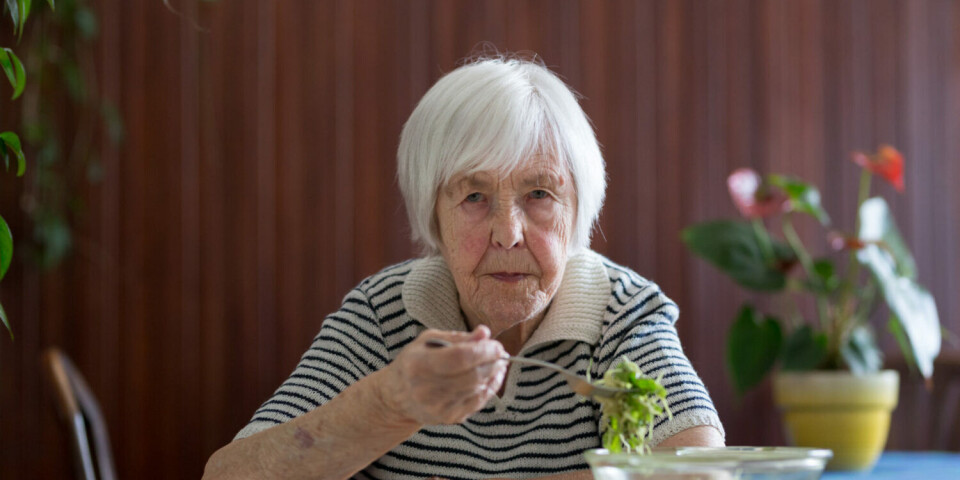THIS CONTENT IS BROUGHT TO YOU BY NTNU Norwegian University of Science and Technology - read more
Elderly with dementia are subjected to violence, abuse, and neglect in their own homes
There’s a clear downside to the Norwegian policy that encourages allowing elderly people to live at home for as long as possible.

In a new study, over 500 caregivers report to what extent they have subjected elderly people with dementia living at home to violence, abuse, and neglect.
Two out of three caregivers report having committed at least one such act against the person with dementia during the past year.
An incident of abuse can range from humiliating scolding, yelling, threats, and pushing, to being pressured into transferring money or property. In the study, the most common type of incident was psychological abuse.

One in five caregivers reports having committed ten or more such acts against the person with dementia during the past year.
Caregivers can be anyone from the person’s spouse to a neighbour.
Municipal funding must be strengthened
“If action is not taken immediately, the future for the elderly in many Norwegian municipalities looks pretty bleak,” says Wenche Malmedal, a professor at NTNU.
Norway already has a large ageing population, but so far, it is only a ripple compared to what's coming. In the next 20 years, Norway will have 250,000 more people over 80 years old. In just five years, there will be more elderly people than children in Norway for the first time.
It is estimated that there are just over 100,000 people currently living with dementia in Norway. By 2050, this figure is expected to more than double.
“We have been aware of this development for a long time. However, there are fewer nursing home spaces now than before. Instead of increasing capacity, it's being reduced,” says Susan Saga, an associate professor at NTNU.
Malmedal believes that Norway's municipal funding needs to be significantly strengthened. There is a need for more round-the-clock care spaces.
Taking sick leave to care for the elderly
“The current system is not designed to handle what's happening now or in the future. We are aware that many people choose to take early retirement, reduce their working hours, or take sick leave in order to care for their elderly relatives. Given that there aren’t enough people in the current workforce in Norway, this is hardly a good solution,” says Malmedal.
Both Saga and Malmedal have been supervisors for Gunn Steinsheim, who wrote her doctoral thesis at NTNU. It provides a glimpse of what life can be like for an elderly person with dementia currently living at home in Norway.
As mentioned above: Two out of three caregivers have committed at least one abusive act against the person with dementia in the past year.
Here’s a breakdown of the types of violence, abuse and neglect elders were subjected to:
- 63.5 per cent psychological
- 9.4 per cent physical
- 3.9 per cent financial exploitation
- 2.4 per cent sexual acts
- 6.5 per cent neglect
Violence can go both ways
Some caregivers report that the person with dementia has carried out similar acts against them. One in three caregivers has experienced aggression from the person with dementia. In these situations, psychological abuse is also the most common.

The risk of violent episodes by caregivers towards people with dementia was higher when the caregiver was a spouse or partner of the person with dementia, and if they experienced aggression from the person with dementia.
Stensheim points out that the caregivers may be struggling with their own health problems, and that their ability to cope with a demanding caregiving situation will vary. It is also quite common for people with dementia to develop challenging behavioural and psychological symptoms.
The study also shows that these symptoms are closely tied to whether relatives feel they carry a heavy caregiving burden.
“Even though the vast majority of caregivers provide good care, we can't help but wonder whether the limits are being pushed too far by leaving major caregiving responsibilities to this group of people. The answer to that is an emphatic yes,” she says.
Her research shows that many caregivers had clear symptoms of anxiety and depression.
“We don't know if this is due to the caregiving burden, but it's easy to imagine that it could well be,” she says.
System failure and underfunding
“If caregivers don't receive enough support, you risk ending up with two people in need of help instead of one,” says Malmedal.

In addition to significant political efforts that genuinely improve municipal funding and create more round-the-clock care spaces, the research shows that even small changes can make a big difference.
“The risk of abuse can be reduced by having a municipal contact person who has knowledge about dementia and who can also assist with bureaucracy and provide proactive support. Some municipalities have good systems in place, but not all,” says Steinsheim.
Saga believes that what this research and other similar studies show is a result of system failure and underfunding.
“No one wants the elderly to suffer, or for them to be left to caregivers who have to work themselves to the bone taking care of them,” she says.
References:
Gjøra et al. Current and Future Prevalence Estimates of Mild Cognitive Impairment, Dementia, and Its Subtypes in a Population-Based Sample of People 70 Years and Older in Norway: The HUNT Study, Journal of Alzheimer’s Disease, vol. 79, 2021. DOI: 10.3233/JAD-20127
Norwegian Directorate of Health. Folkehelse gjennom livsløpet (Public health in a life-cycle perspective)
Official Norwegian Report NOU 2023: 4. Tid for handling. Personellet i en bærekraftig helse- og omsorgstjeneste (Time to act. The personnel in a sustainable health and care service).
Steinsheim, G. Stretched to the Limit? Informal caregiver burden and elder abuse among home-dwelling persons with dementia, Doctoral dissertation at NTNU, 2025.
———
Read the Norwegian version of this article on forskning.no
More content from NTNU:
-
Researchers have uncovered major problems in Norway's salmon industry
-
Why ChatGPT is bad at imitating people
-
Outer space has a trash problem, according to researchers
-
These researchers want quantum computers that work properly
-
If you can hear your neighbour snoring, there’s something wrong with the building you live in
-
The spiders that eat stars, and the researchers who catch them





































